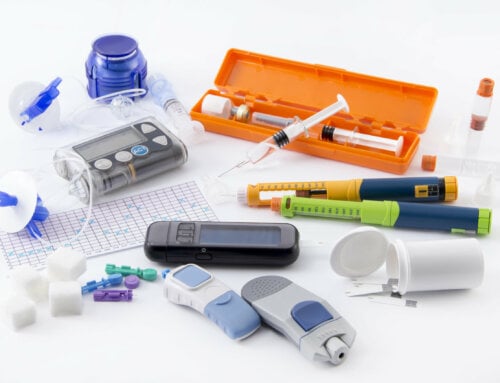There is always new information pertaining to topics on diabetes being presented from various sources such as television, the web, and medical journal studies. I like to explain the trends in a simple format to help you stay connected without all the medical jargon. I try to cover a variety of topics in this newsletter which hopefully will be of interest and allow you to make more informed decisions.
- A recent study funded by the National Institutes of Health looked at over 2000 seniors (age 70 and older), which confirmed that elevated blood sugars over time increase the risk of dementia. If the average blood sugars were 190mg/dl for a period of time the risk of dementia increased by 40%. If the average blood sugars were 160mg/dl it increased by 25%. The study, published in The New England Journal of Medicine, even predicted that pre-diabetes readings of 105-120mg/dl raised the dementia risk in seniors over those seniors with blood sugars 100 or less (considered normal). Bottom line: try to keep blood sugars as close to normal as possible as you age to reduce the risk of dementia. Monitor blood pressure as well and follow the advice of your health care provider.
- A recent study conducted by The Imperial College of London followed over 20,000 participants using public transportation for work. It was the first documented study to find that “active travel” can cut the risk of diabetes and hypertension. They compared people using public transportation such as buses, subways and trains to people that used private transportation such as cars and people who cycle or walk to work. The study published in The American Journal of Preventive Medicine found that those who use public transportation and walk a minimum of 20 minutes have added benefits, with up to an 18% decrease in documented diabetes. Those who actually walked or cycled all the way to work had up to a 40-50% decrease in diabetes. Obesity rates were also reduced. Bottom line: city planners may use this to create better means of public transportation, as well as biking/walking paths in the future. Cold temperature cities may look at underground path systems. Try to move as much as possible in a given day.
- If you are between the ages of 23-59 and you have not had a hepatitis B vaccine, consider getting one. Using a glucose meter improperly by sharing finger stick devices can make you twice as likely to get the virus as those without diabetes. Sharing insulin syringes or pen needles have the same effect. Hepatitis B usually has no symptoms until there is advanced liver disease. Bottom line: The vaccine protects you for life with few if any side effects. Never share needles, syringes or lancets. Check to see if you were previously vaccinated and if not follow up with your health care provider.
- Insulin – Grab and go. There is a new insulin delivery device called the V-Go that is disposable and used mainly for those with diabetes – type 2 or those with type 1 who take large amounts of insulin. It is used in place of pens and syringes/needles since it is self contained. The insulin is transferred from the vial to the V-Go plastic non-electronic device. It uses a preset continuous supply of insulin given in basal/bolus rates but is much simpler than an insulin pump. It is worn for 24 hours and then thrown away. You should be instructed on this device before use. Bottom line: the cost is about $200 for a 30 day supply and your health insurance may cover most of it. It prevents you from taking multiple shots a day but is initially inserted under the skin with a needle. It may make taking multiple shots a day a thing of the past. Check with your health care provider to see if this is an option for you.
New studies, new devices and new standards of care are constantly being updated. Taking care of your diabetes is hard work. See if anything you learned today can make your life with diabetes a bit easier!
NOTE: Consult your doctor first to make sure my recommendations fit your special health needs.






Leave A Comment